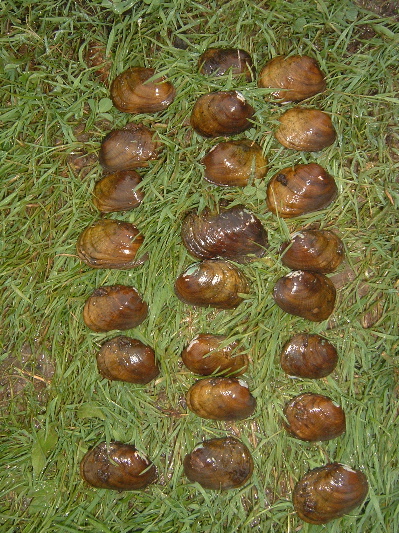Click HERE for my publications.
Freshwater mussels (also known as unionoids, naiads, or clams) are bivalves from the superfamily Unionoida. Most unionoids require a host fish for their parasitic larvae. Unionoids are often considered the most endangered group of animals in the world. A combination of largely human-induced impacts such as habitat degradation, destruction of freshwater environments, and the introduction of exotic species have caused catastrophic declines in many unionoids over the past 150 years. Of the approximately 300 species in North America, over 70% are considered imperiled. Despite the great conservation concern for these mussels, little remains known about the evolutionary relationships of the species.
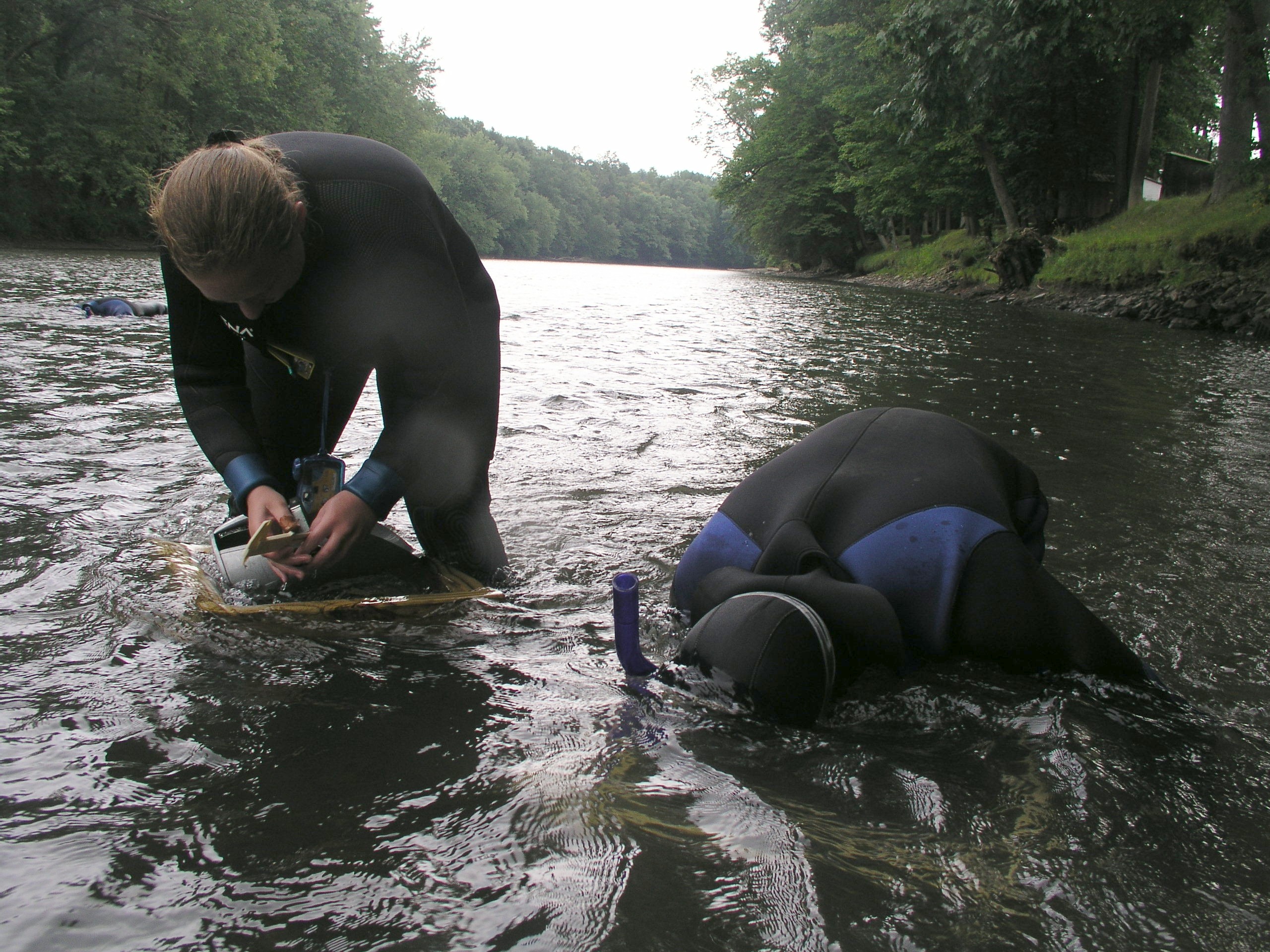
Searching for mussels in French Creek, PA.
Genetic data are critical for the perpetuation of imperiled freshwater mussels. Ecology, captive care, and propagation have been emphasized in the planning for the recovery of endangered freshwater mussels. However, data on the genetic characteristics of mussel populations are needed to make scientifically sound decisions regarding the numbers, localities, and logistical concerns of potential relocations or population augmentation through artificial propagation. It has been proposed that animals should be relocated, in order to augment populations, in areas that contain similar genetic profiles.
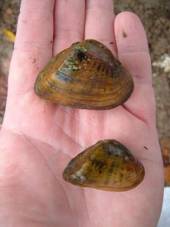
Snuffbox from the Clinch River, TN.
As the phylogenetic relationships, evolution of reproductive structures, and population structure of many species are largely unknown; my lab constructs hypotheses for the evolution of freshwater mussels and investigating their postglacial dispersal, using molecular phylogenetic and population genetic techniques.
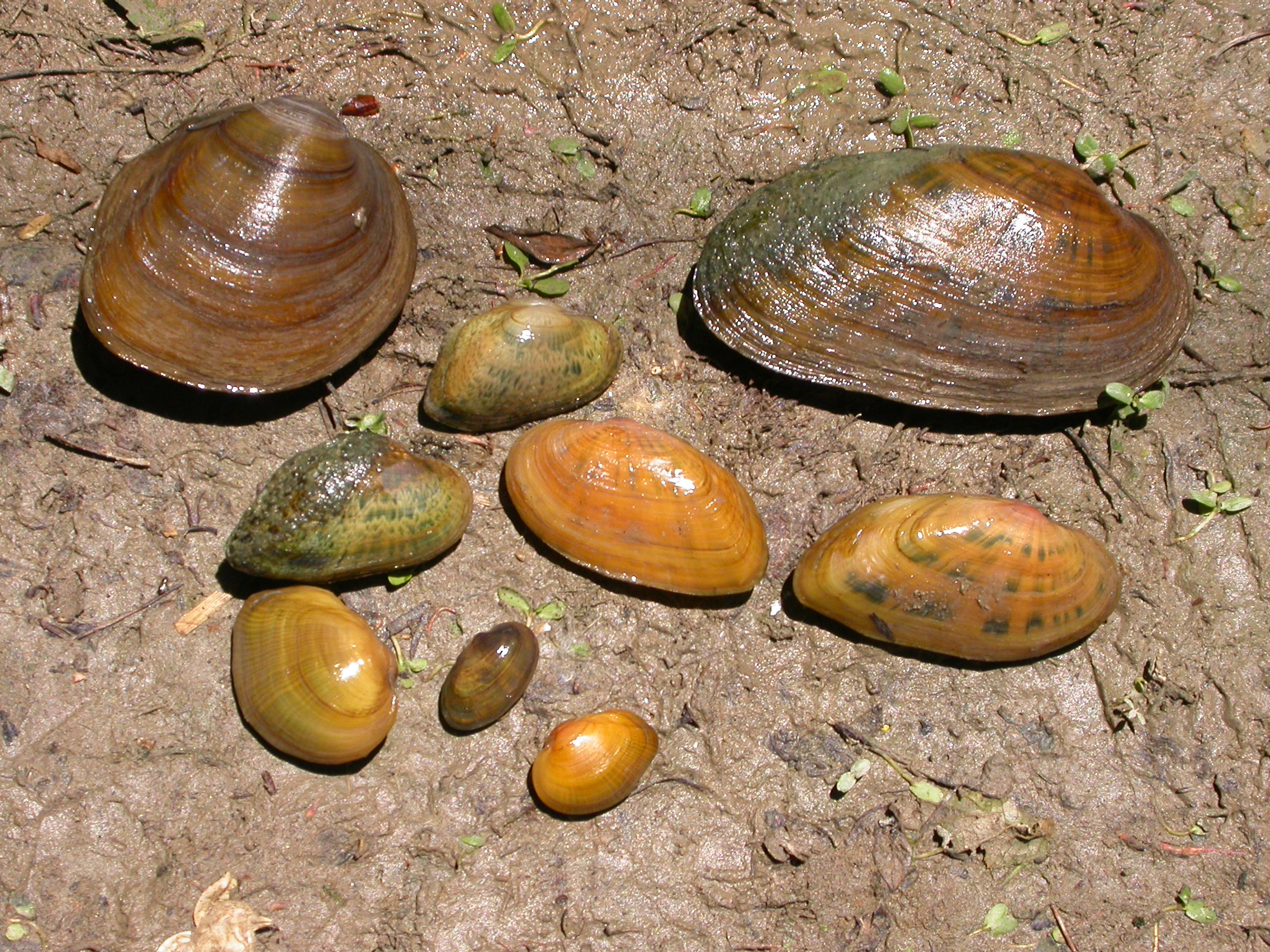
Endangered mussels from the Sydenham River, Ontario.
Current Research
Genetic data are critical for the conservation and perpetuation of imperiled freshwater mussels. Conservation plans for the recovery of endangered freshwater mussels have mostly emphasized their ecology, captive care, and propagation, but genetic data are also needed to make scientifically sound decisions regarding the numbers, localities, and logistical concerns of potential relocations or population augmentation through artificial propagation. For example, although it has been proposed to augment surviving populations by relocating animals into areas with genetically similar populations, this information is lacking for most at-risk species.
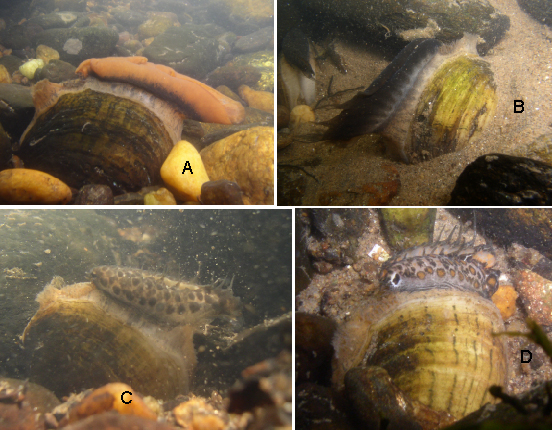
Diversity of Wavy-rayed Lampmussel (Lampsilis fasciola) lures (Photo Credit: S. Fraley, NCWRC).
Co-evolution of mussels and hosts
Many species of freshwater mussels (Bivalvia: Unionoida) suffer from severe population declines. Their biodiversity is diminishing at a nearly unprecedented pace and are among the most endangered organisms on Earth. Unionoids form a critical part of aquatic communities3, they often make up a large part of the biomass in aquatic systems and have critical roles in nutrient cycling, as habitat, and prey for other aquatic fauna. Declines and losses in the diversity of unionoid communities are recognized key indicators of environmental stress.
In the genus Epioblasma,of the approximately 25 species, 14 are considered to already be extinct and the status of the remaining taxa is uncertain, or threatened. The Snuffbox mussel, E. triquetra is the most widely distributed member of the genus. They are generally considered to be more sensitive to human mediated disturbances than many other native mussels. The remaining populations of Snuffboxare small and fragmented, and the potential for their loss due to catastrophic accidents is possible. If efforts are not made to preserve this species, it is conceivable that Epioblasma may be the first genus of unionoid mussel to go extinct.
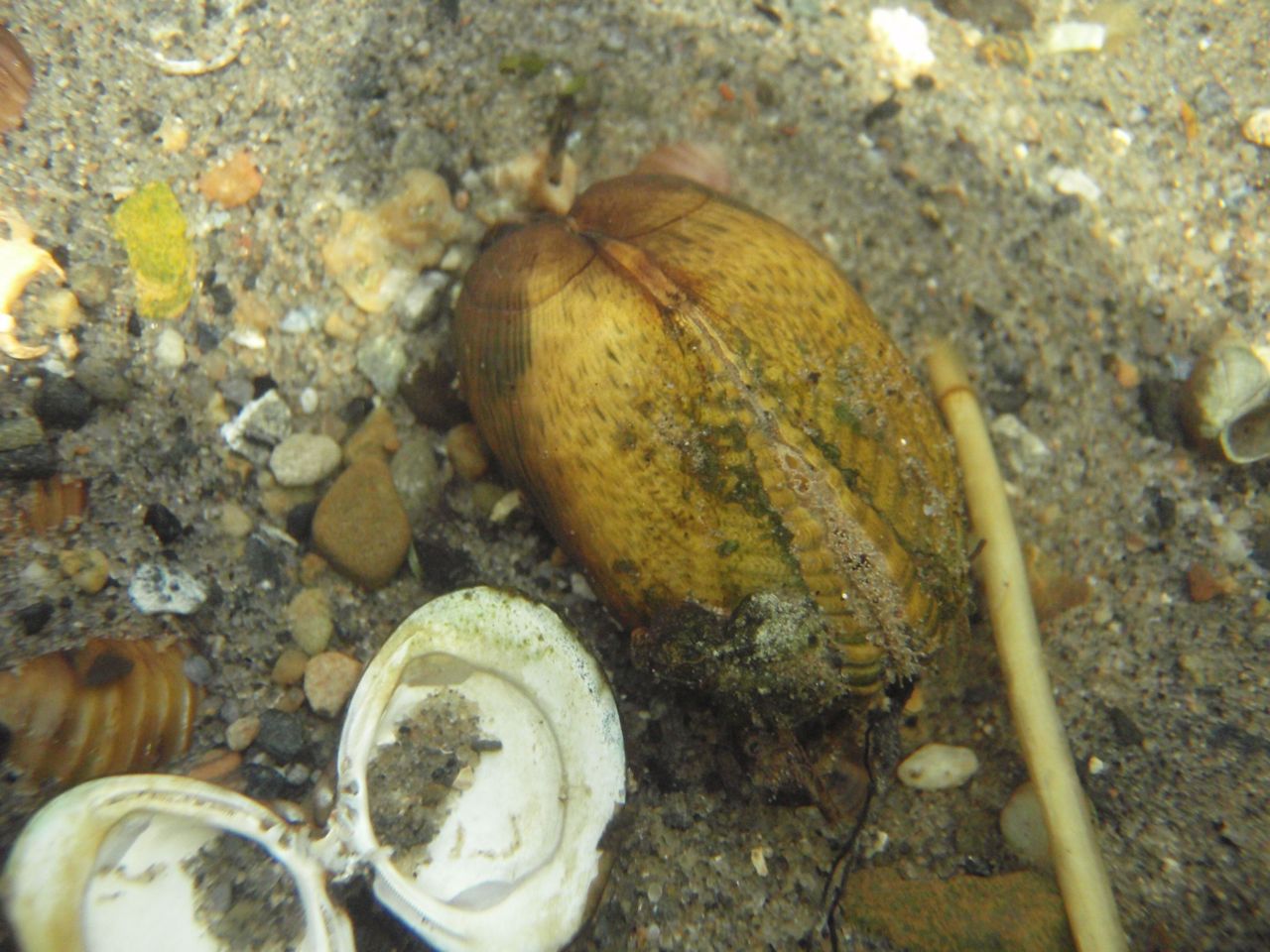
The business-end of a Snuffbox mussel (Epioblasma triquetra) in the Flat River, Michigan.
Recent research has identified several potential host fish species for use in artificial propagation, including logperch, Percina caprodes. Recent research has recently discovered that Snuffbox and other congeners use a fascinating behaviour to infest a potential host fish. A female Snuffbox will gape open waiting for a logperch to stick its rostrum into the valve gap. When the fish touches the mussel it snaps shut, trapping the head and mouth of the fish. The mussel then pumps glochidia (larval mussels) into the mouth of the fish, whereupon the glochidia attach to and infest the gills. [See: these photos and videos for further description of this behaviour].
Co-evolutionary theory states that the phylogeny, population structure, and local adaptations of parasitic species should closely match that of their hosts. These relationships can also be indicative of potential conservation units and potential conservation units. Invoking co-evolutionary theory, I expect the genetic population structure (based on mitochondrial and microsatellite DNA) of the logperch to closely match what was found for the Snuffbox. As logperch remain common where Snuffbox populations have been lost, their (host) genetic structure could be used to assist in managing reintroductions of Snuffbox mussels. I hypothesize that logperch occurring sympatrically with Snuffbox will act as significantly better hosts (producing more metamorphosed juveniles) than allopatric logperch. This result will confirm the results of the molecular study, indicating that populations are locally adapted to their hosts. This will also confirm the existence of distinct conservation units.
As the Snuffbox mussel is very specific in its host requirement and has published microsatellite and mitochondrial DNA datasets from populations across its range, it is an ideal candidate for a co-evolutionary study. This type of study may eventually be necessary for other wide-ranging endangered mussels to prevent their extinction. Directly linking unionoid research to fisheries (host) research has been largely overlooked.
A manuscript on this research has recently been completed and has been accepted for publication by the Biological Journal of the Linnean Society (see CV).
Population structure of aquatic invertebrates in recently glaciated landscapes
Research by graduate students Phil Mathias and Jennifer Bergner and undergraduates Joe Bailey and Briana Collins are working to answer questions of scale and post-glacial biogeography with respect to distribution of unionid mussel genetic and species diversity throughout the State of Michigan and the Great Lakes. Stay tuned for more info about these projects in progress.
Insular lake biogeography using freshwater mollusks
Undergraduate researchers Tonya Neuman and Andy Harris are conducting research on mollusks found in the insular lakes of the Beaver and Manitou island chains of Lake Michigan. Tonya and Andy presented this research at the 2010 meeting of the North American Benthological Society in Santa Fe, NM. Here are brief summaries of their research.
DNA barcoding, morphometrics, and identifying species of Pyganodon (Fisher and Crosse, 1893; Bivalvia: Unionidae) in insular lakes of Lake Michigan Islands.
DNA barcoding using the mitochondrial genes NADH1 and CO1 on freshwater mussels from the genus Pyganodon was used to determine whether the mussels found in insular lakes of Lake Michigan Islands were a single species with highly-plastic morphologies, or if they were two or more distinct species with distinct morphologies. Because the candidate species of Pyganodon that post-glacially invaded these lakes –P. grandis and P. lacustris from a Mississippian refuge and P. cataracta and P. fragilis from an Atlantic Coastal refuge – are very similar morphologically, DNA sequences were used to determine which were present. The sequence data revealed definite P. grandis in two lakes on Beaver Island and a species of Pyganodon sister to P. cataracta and P. fragilis in Lake Manitou (North Manitou Island) and the two Beaver Island lakes. We believe the latter species is P. lacustris, as P. grandis and P. lacustris have been known to occur in sympatry. Morphologies of these species have significant overlap and accurate field identifications remain difficult. It is unknown if these species hybridize, thus further research using microsatellite genotyping is needed.
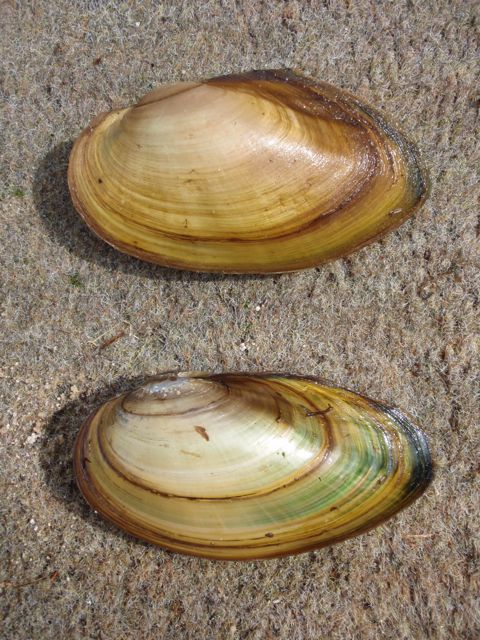
Pyganodon grandis (top) and P. lacustris (bottom) from Lake Geneserath on Beaver Island, Michigan.
Insular lake island biogeography of freshwater mollusks on the Lake Michigan island archipelago: Using lake metrics to predict species diversity.
The traditional use of island biogeography theory (MacArthur and Wilson 1967) has been expanded to explain species richness patterns on various types of habitat islands. The insular lakes of the Beaver and Manitou island chains in Lake Michigan present an excellent opportunity to study these processes on recently formed and isolated habitats. Freshwater mollusk diversity was compared with several geographical, chemical, and biological variables. Non-metric multi-dimensional scaling ordination was used to analyze and highlight the most relevant environmental conditions for mollusk species diversity and species presence/absence. Shoreline length and shoreline development values represented the most effective predictors of mollusk diversity, showing the only significant correlations. The data suggest that shoreline length and development more accurately represent available habitat area in the case of primarily littoral-dwelling mollusks. The relatively weak correlations observed with area and isolation from Lake Michigan suggest that the application of island biogeography theory may be limited for mollusks when when using these methods.
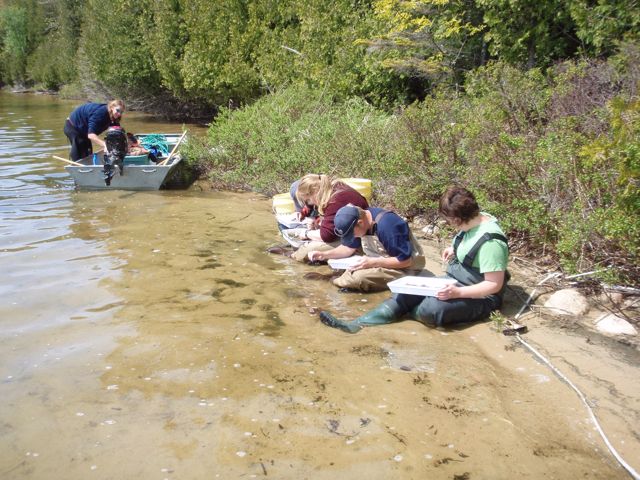
Phil, Dan, Tonya, Andy, and Daelyn picking macroinvertebrates on Font Lake, Beaver Island, Michigan (June 2009).
Great Lakes Unionid Refuges
Link to project page.
Host fish identification and propagation
In collaboration with Dr. Daelyn Woolnough (CMU), we will be developing a laboratory for identifying the host fish species for at risk freshwater mussels in the Great Lakes region. Ultimately, the goal will be to use the facility to restore and augment populations of federal and state listed unionids in the streams, rivers, and lakes of the region. Our new Aquatic Habitat units were installed in February 2011.
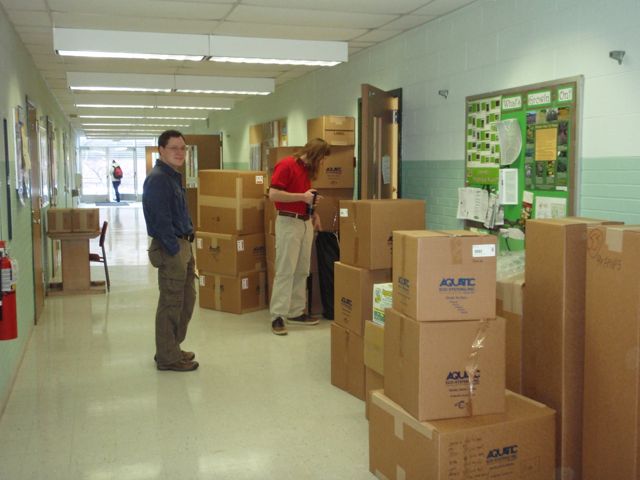
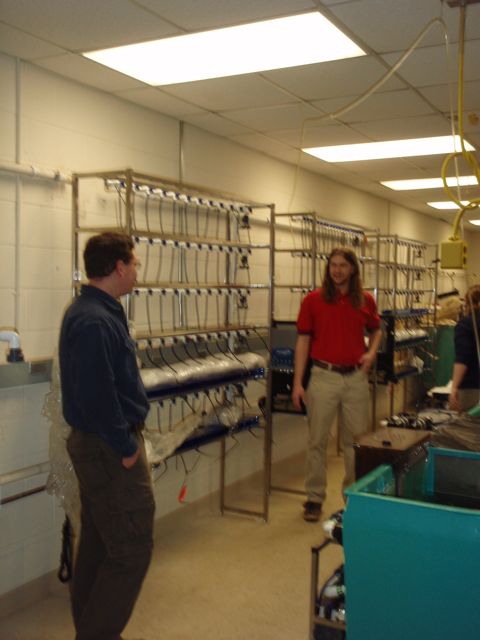
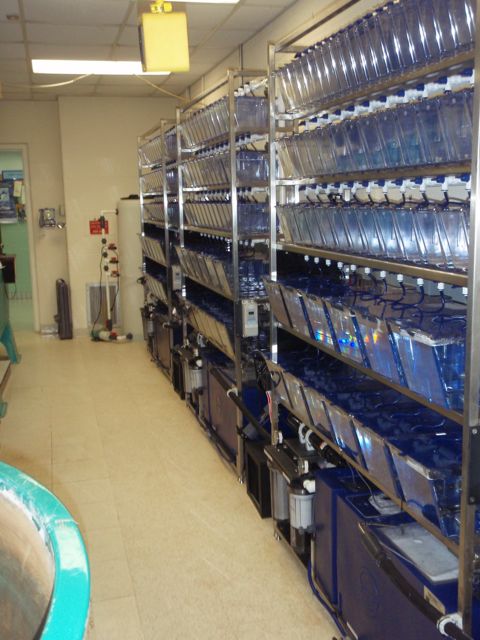
Grad students Phil Mathias and Matt Rowe helping with the installation of the new Aquatic Habitat Units, with completed units on right (February, 2011)
This project is funded by the U.S. Fish and Wildlife Service - Great Lakes Basin Endangered Species Recovery Initiative.
